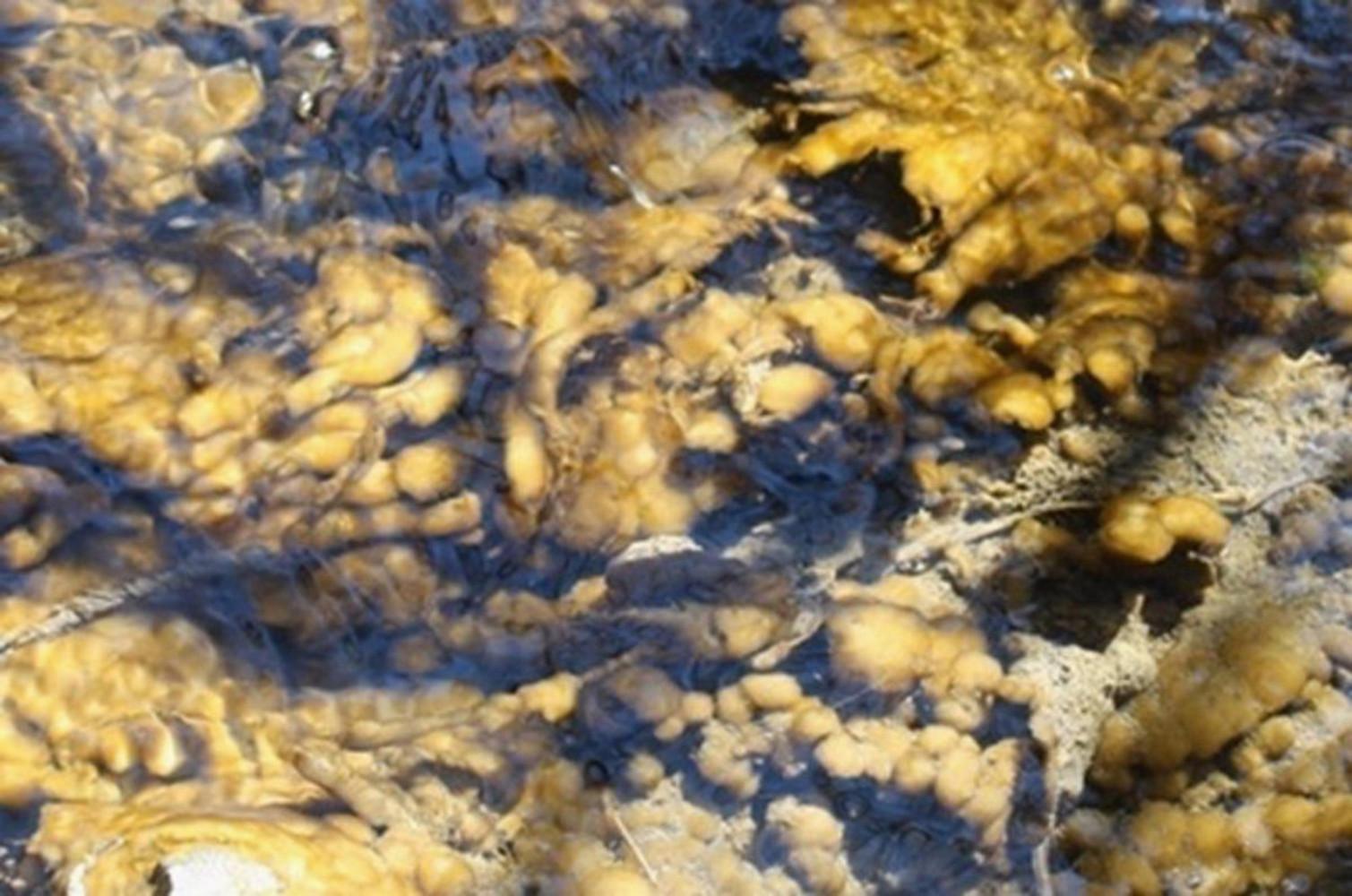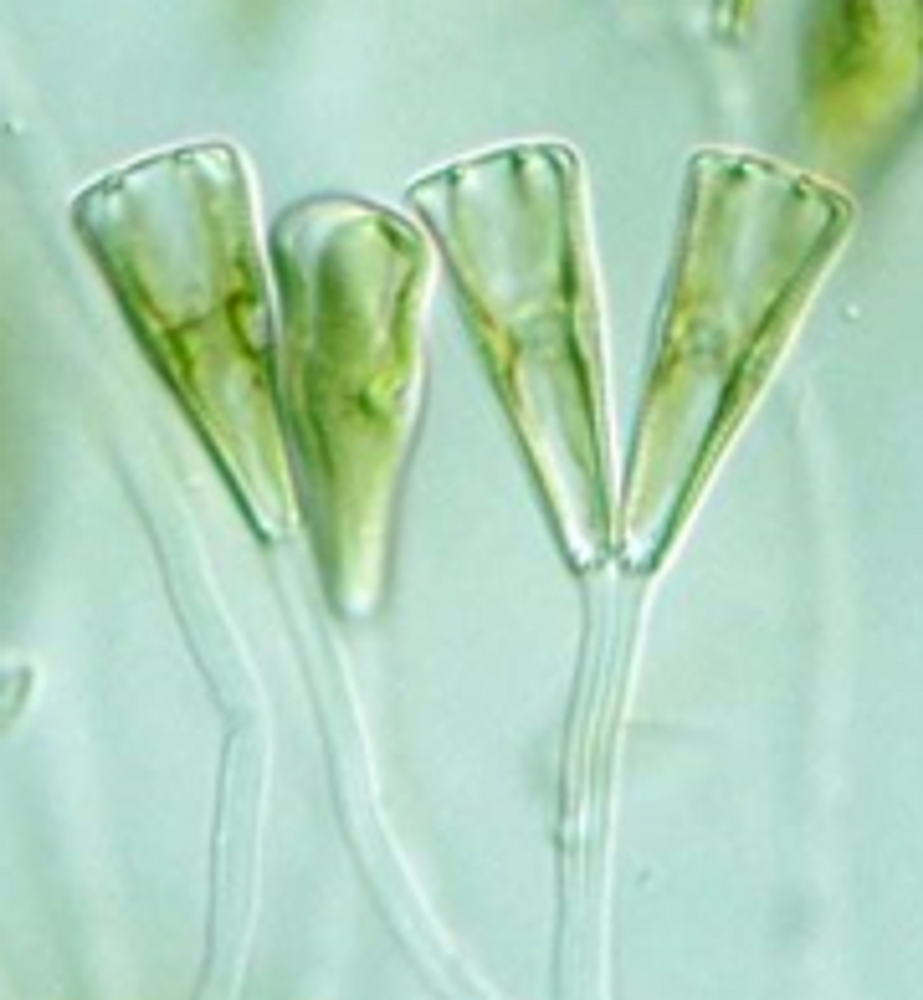Periphyton, also sometimes called biofilm, is a communal group of aquatic organisms such as Algae, Bacteria, Fungi, and such. Generally, these communities are comprised mostly of algae like diatoms that attach to a surface that light will reach. Once established, other organisms will accumulate and form the “slimy” coating we typically associate as periphyton.1
WHAT IS PERIPHYTON?

WHAT IS A DIATOM?
WHY IS IT COMMON IN THE WINTER?

Due to the nutrient cycles of aquatic systems, nutrients are often unavailable for periods and in excess during others. During the winter, nutrient availability tends to increase due to increased erosion and lower biological activity. Stream systems see a greater increase in nutrients due to the constant influx of water.2 Silica is an especially important nutrient for diatom species that is less available other times of the year. The increase in nutrient availability allows periphyton to grow and become more prevalent along stream edges and shorelines in the winter.
WHAT DOES PERIPHYTON DO?
SHOULD I BE WORRIED?
Periphyton poses little to no harm for an aquatic system. It is a good sign of a healthy ecosystem. The only negative it could cause to a system is some individuals may consider it “unsightly” or even “gross,” however it is not likely to cause harm. Periphyton colonies often diminish as nutrient availability lowers throughout the year, so management is often unnecessary.
INFORMATION FROM:
1Wu, Y. (2016). Periphyton: functions and application in environmental remediation. Elsevier.
2Vadeboncoeur, Yvonne. Lowe, Rex. (2024). Wetzel’s Limnology (Fourth Edition). Academic Press.

